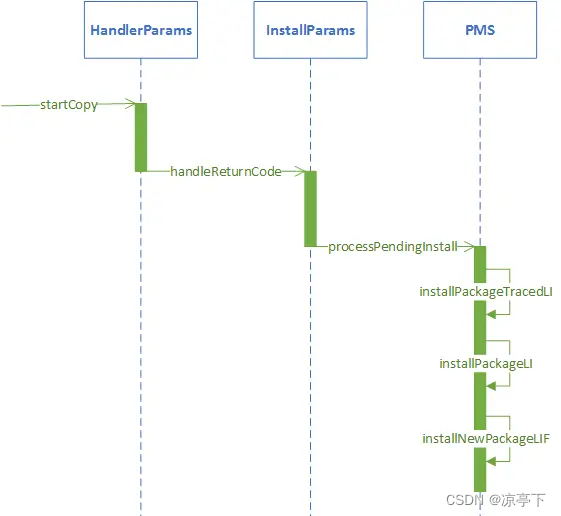深度学习(24)——YOLO系列(4)
文章目录
- 深度学习(24)——YOLO系列(4)
- 1. dataset准备
- (1)数据详解
- (2)dataset
- (3)敲黑板:YOLOv5第一个亮点——>mosaic!!
- 2. model详解
- (1)一个模型可视化的小工具——netron
- (2)YOLOs-v5
- (3)Focus
- (4)BottleneckCSP
- (5)SPP(spatial pyramid pooling)
- (6)PAN(path aggregation network)
- 3. 训练
核心目标:YOLO-v5 代码详解
代码源自GitHub
数据源于其中的 maskdata!(这里有40个可以用于CV的小型数据,当然没有ImageNet那么大型,但是真的有那么大数据集咱普通家庭的小孩也没能力消化,硬件完全支撑不起咱的算力。所以练手就这样的小数据试试水)
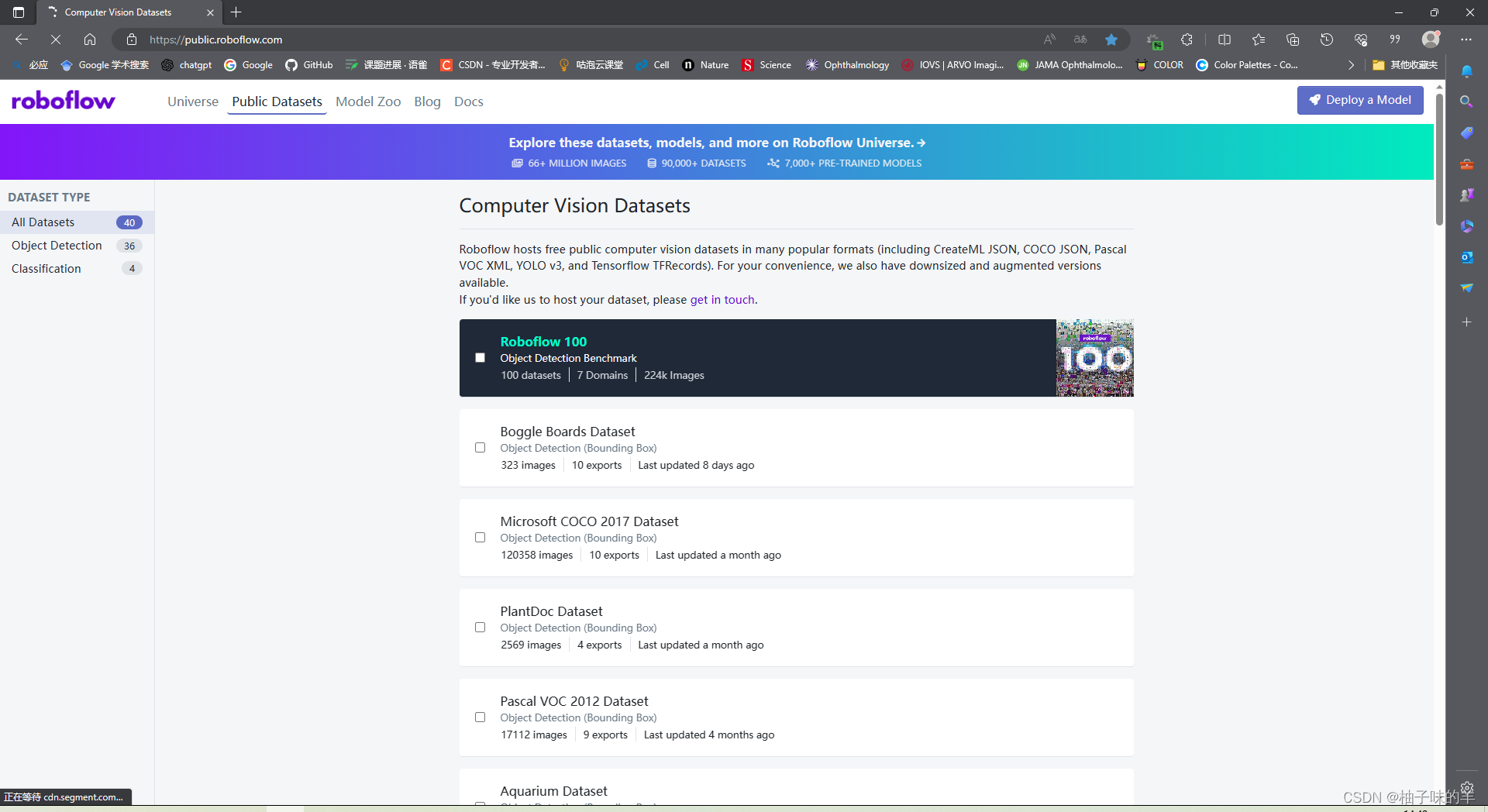
相比前面的版本,v5更具有工程型,代码写的很简洁,之所以分享一是自己学习大牛整理代码的过程,也是自己知识点详细的记录。
惯性路线:data,model,train,predict
1. dataset准备
今天这个数据集上面已经说过,是一些人待着口罩,主要是检测人有没有戴口罩的。有戴口罩就是0,没有带口罩就是1,看一下例图:
image:
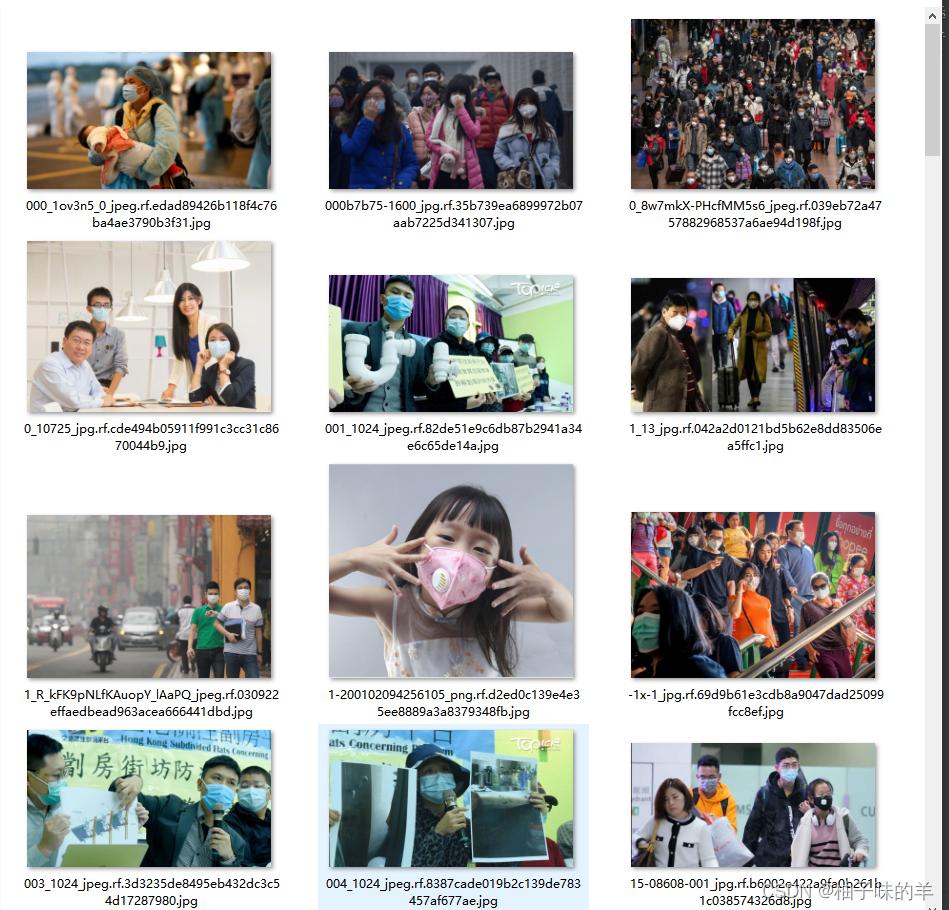
label:

(1)数据详解
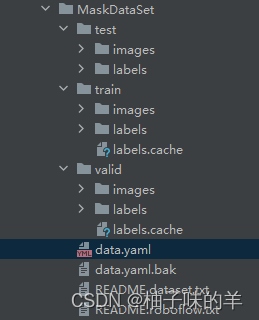
下载的数据整理以后是这样的结构
- train和valid中的labels.cache主要是为了加速数据读入速度直接将它存为cache格式。
- data.yaml 中主要记录train和validate的图像数据路径,以及检测区分的类别,(我们的任务主要区分有没有戴口罩,因此是2分类)
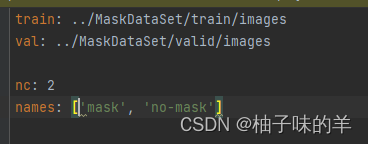
- 强调一下label中的数据格式是:[class,x,y,x,y](其中的xy是相对于整张图的相对位置,整张图现在是1*1,所以可以看到label的后四位都是小于1的数字)
(2)dataset
dataset.py
import glob
import math
import os
import random
import shutil
import time
from pathlib import Path
from threading import Threadimport cv2
import numpy as np
import torch
from PIL import Image, ExifTags
from torch.utils.data import Dataset
from tqdm import tqdmfrom utils.general import xyxy2xywh, xywh2xyxy, torch_distributed_zero_firsthelp_url = 'https://github.com/ultralytics/yolov5/wiki/Train-Custom-Data'
img_formats = ['.bmp', '.jpg', '.jpeg', '.png', '.tif', '.tiff', '.dng']
vid_formats = ['.mov', '.avi', '.mp4', '.mpg', '.mpeg', '.m4v', '.wmv', '.mkv']# Get orientation exif tag
for orientation in ExifTags.TAGS.keys():if ExifTags.TAGS[orientation] == 'Orientation':breakdef get_hash(files):# Returns a single hash value of a list of filesreturn sum(os.path.getsize(f) for f in files if os.path.isfile(f))def exif_size(img):# Returns exif-corrected PIL sizes = img.size # (width, height)try:rotation = dict(img._getexif().items())[orientation]if rotation == 6: # rotation 270s = (s[1], s[0])elif rotation == 8: # rotation 90s = (s[1], s[0])except:passreturn sdef create_dataloader(path, imgsz, batch_size, stride, opt, hyp=None, augment=False, cache=False, pad=0.0, rect=False,rank=-1, world_size=1, workers=8):# Make sure only the first process in DDP process the dataset first, and the following others can use the cache.with torch_distributed_zero_first(rank):dataset = LoadImagesAndLabels(path, imgsz, batch_size,augment=augment, # augment imageshyp=hyp, # augmentation hyperparametersrect=rect, # rectangular trainingcache_images=cache,single_cls=opt.single_cls,stride=int(stride),pad=pad,rank=rank)batch_size = min(batch_size, len(dataset))nw = min([os.cpu_count() // world_size, batch_size if batch_size > 1 else 0, workers]) # number of workerssampler = torch.utils.data.distributed.DistributedSampler(dataset) if rank != -1 else Nonedataloader = InfiniteDataLoader(dataset,batch_size=batch_size,num_workers=nw,sampler=sampler,pin_memory=True,collate_fn=LoadImagesAndLabels.collate_fn) # torch.utils.data.DataLoader()return dataloader, datasetclass InfiniteDataLoader(torch.utils.data.dataloader.DataLoader):""" Dataloader that reuses workers.Uses same syntax as vanilla DataLoader."""def __init__(self, *args, **kwargs):super().__init__(*args, **kwargs)object.__setattr__(self, 'batch_sampler', _RepeatSampler(self.batch_sampler))self.iterator = super().__iter__()def __len__(self):return len(self.batch_sampler.sampler)def __iter__(self):for i in range(len(self)):yield next(self.iterator)class _RepeatSampler(object):""" Sampler that repeats forever.Args:sampler (Sampler)"""def __init__(self, sampler):self.sampler = samplerdef __iter__(self):while True:yield from iter(self.sampler)class LoadImages: # for inferencedef __init__(self, path, img_size=640):p = str(Path(path)) # os-agnosticp = os.path.abspath(p) # absolute pathif '*' in p:files = sorted(glob.glob(p, recursive=True)) # globelif os.path.isdir(p):files = sorted(glob.glob(os.path.join(p, '*.*'))) # direlif os.path.isfile(p):files = [p] # fileselse:raise Exception('ERROR: %s does not exist' % p)images = [x for x in files if os.path.splitext(x)[-1].lower() in img_formats]videos = [x for x in files if os.path.splitext(x)[-1].lower() in vid_formats]ni, nv = len(images), len(videos)self.img_size = img_sizeself.files = images + videosself.nf = ni + nv # number of filesself.video_flag = [False] * ni + [True] * nvself.mode = 'images'if any(videos):self.new_video(videos[0]) # new videoelse:self.cap = Noneassert self.nf > 0, 'No images or videos found in %s. Supported formats are:\nimages: %s\nvideos: %s' % \(p, img_formats, vid_formats)def __iter__(self):self.count = 0return selfdef __next__(self):if self.count == self.nf:raise StopIterationpath = self.files[self.count]if self.video_flag[self.count]:# Read videoself.mode = 'video'ret_val, img0 = self.cap.read()if not ret_val:self.count += 1self.cap.release()if self.count == self.nf: # last videoraise StopIterationelse:path = self.files[self.count]self.new_video(path)ret_val, img0 = self.cap.read()self.frame += 1print('video %g/%g (%g/%g) %s: ' % (self.count + 1, self.nf, self.frame, self.nframes, path), end='')else:# Read imageself.count += 1img0 = cv2.imread(path) # BGRassert img0 is not None, 'Image Not Found ' + pathprint('image %g/%g %s: ' % (self.count, self.nf, path), end='')# Padded resizeimg = letterbox(img0, new_shape=self.img_size)[0]# Convertimg = img[:, :, ::-1].transpose(2, 0, 1) # BGR to RGB, to 3x416x416img = np.ascontiguousarray(img)# cv2.imwrite(path + '.letterbox.jpg', 255 * img.transpose((1, 2, 0))[:, :, ::-1]) # save letterbox imagereturn path, img, img0, self.capdef new_video(self, path):self.frame = 0self.cap = cv2.VideoCapture(path)self.nframes = int(self.cap.get(cv2.CAP_PROP_FRAME_COUNT))def __len__(self):return self.nf # number of filesclass LoadWebcam: # for inferencedef __init__(self, pipe=0, img_size=640):self.img_size = img_sizeif pipe == '0':pipe = 0 # local camera# pipe = 'rtsp://192.168.1.64/1' # IP camera# pipe = 'rtsp://username:password@192.168.1.64/1' # IP camera with login# pipe = 'rtsp://170.93.143.139/rtplive/470011e600ef003a004ee33696235daa' # IP traffic camera# pipe = 'http://wmccpinetop.axiscam.net/mjpg/video.mjpg' # IP golf camera# https://answers.opencv.org/question/215996/changing-gstreamer-pipeline-to-opencv-in-pythonsolved/# pipe = '"rtspsrc location="rtsp://username:password@192.168.1.64/1" latency=10 ! appsink' # GStreamer# https://answers.opencv.org/question/200787/video-acceleration-gstremer-pipeline-in-videocapture/# https://stackoverflow.com/questions/54095699/install-gstreamer-support-for-opencv-python-package # install help# pipe = "rtspsrc location=rtsp://root:root@192.168.0.91:554/axis-media/media.amp?videocodec=h264&resolution=3840x2160 protocols=GST_RTSP_LOWER_TRANS_TCP ! rtph264depay ! queue ! vaapih264dec ! videoconvert ! appsink" # GStreamerself.pipe = pipeself.cap = cv2.VideoCapture(pipe) # video capture objectself.cap.set(cv2.CAP_PROP_BUFFERSIZE, 3) # set buffer sizedef __iter__(self):self.count = -1return selfdef __next__(self):self.count += 1if cv2.waitKey(1) == ord('q'): # q to quitself.cap.release()cv2.destroyAllWindows()raise StopIteration# Read frameif self.pipe == 0: # local cameraret_val, img0 = self.cap.read()img0 = cv2.flip(img0, 1) # flip left-rightelse: # IP cameran = 0while True:n += 1self.cap.grab()if n % 30 == 0: # skip framesret_val, img0 = self.cap.retrieve()if ret_val:break# Printassert ret_val, 'Camera Error %s' % self.pipeimg_path = 'webcam.jpg'print('webcam %g: ' % self.count, end='')# Padded resizeimg = letterbox(img0, new_shape=self.img_size)[0]# Convertimg = img[:, :, ::-1].transpose(2, 0, 1) # BGR to RGB, to 3x416x416img = np.ascontiguousarray(img)return img_path, img, img0, Nonedef __len__(self):return 0class LoadStreams: # multiple IP or RTSP camerasdef __init__(self, sources='streams.txt', img_size=640):self.mode = 'images'self.img_size = img_sizeif os.path.isfile(sources):with open(sources, 'r') as f:sources = [x.strip() for x in f.read().splitlines() if len(x.strip())]else:sources = [sources]n = len(sources)self.imgs = [None] * nself.sources = sourcesfor i, s in enumerate(sources):# Start the thread to read frames from the video streamprint('%g/%g: %s... ' % (i + 1, n, s), end='')cap = cv2.VideoCapture(eval(s) if s.isnumeric() else s)assert cap.isOpened(), 'Failed to open %s' % sw = int(cap.get(cv2.CAP_PROP_FRAME_WIDTH))h = int(cap.get(cv2.CAP_PROP_FRAME_HEIGHT))fps = cap.get(cv2.CAP_PROP_FPS) % 100_, self.imgs[i] = cap.read() # guarantee first framethread = Thread(target=self.update, args=([i, cap]), daemon=True)print(' success (%gx%g at %.2f FPS).' % (w, h, fps))thread.start()print('') # newline# check for common shapess = np.stack([letterbox(x, new_shape=self.img_size)[0].shape for x in self.imgs], 0) # inference shapesself.rect = np.unique(s, axis=0).shape[0] == 1 # rect inference if all shapes equalif not self.rect:print('WARNING: Different stream shapes detected. For optimal performance supply similarly-shaped streams.')def update(self, index, cap):# Read next stream frame in a daemon threadn = 0while cap.isOpened():n += 1# _, self.imgs[index] = cap.read()cap.grab()if n == 4: # read every 4th frame_, self.imgs[index] = cap.retrieve()n = 0time.sleep(0.01) # wait timedef __iter__(self):self.count = -1return selfdef __next__(self):self.count += 1img0 = self.imgs.copy()if cv2.waitKey(1) == ord('q'): # q to quitcv2.destroyAllWindows()raise StopIteration# Letterboximg = [letterbox(x, new_shape=self.img_size, auto=self.rect)[0] for x in img0]# Stackimg = np.stack(img, 0)# Convertimg = img[:, :, :, ::-1].transpose(0, 3, 1, 2) # BGR to RGB, to bsx3x416x416img = np.ascontiguousarray(img)return self.sources, img, img0, Nonedef __len__(self):return 0 # 1E12 frames = 32 streams at 30 FPS for 30 yearsclass LoadImagesAndLabels(Dataset): # for training/testingdef __init__(self, path, img_size=640, batch_size=16, augment=False, hyp=None, rect=False, image_weights=False,cache_images=False, single_cls=False, stride=32, pad=0.0, rank=-1):try:f = [] # image filesfor p in path if isinstance(path, list) else [path]: #win和linux有点区别 所以这里面代码稍微处理的内容多了点p = str(Path(p)) # os-agnosticparent = str(Path(p).parent) + os.sepif os.path.isfile(p): # filewith open(p, 'r') as t:t = t.read().splitlines()f += [x.replace('./', parent) if x.startswith('./') else x for x in t] # local to global pathelif os.path.isdir(p): # folderf += glob.iglob(p + os.sep + '*.*')else:raise Exception('%s does not exist' % p)self.img_files = sorted([x.replace('/', os.sep) for x in f if os.path.splitext(x)[-1].lower() in img_formats])except Exception as e:raise Exception('Error loading data from %s: %s\nSee %s' % (path, e, help_url))n = len(self.img_files)assert n > 0, 'No images found in %s. See %s' % (path, help_url)bi = np.floor(np.arange(n) / batch_size).astype(np.int) # batch index #batch索引nb = bi[-1] + 1 # number of batches #一个epoch有多少个batchself.n = n # number of imagesself.batch = bi # batch index of imageself.img_size = img_sizeself.augment = augmentself.hyp = hypself.image_weights = image_weights self.rect = False if image_weights else rectself.mosaic = self.augment and not self.rect # load 4 images at a time into a mosaic (only during training)self.mosaic_border = [-img_size // 2, -img_size // 2] #限定范围self.stride = stride#下采样总值# Define labelssa, sb = os.sep + 'images' + os.sep, os.sep + 'labels' + os.sep # /images/, /labels/ substringsself.label_files = [x.replace(sa, sb, 1).replace(os.path.splitext(x)[-1], '.txt') for x in self.img_files]# Check cache #可以设置缓存,再训练就不用一个个读了cache_path = str(Path(self.label_files[0]).parent) + '.cache' # cached labelsif os.path.isfile(cache_path):cache = torch.load(cache_path) # loadif cache['hash'] != get_hash(self.label_files + self.img_files): # dataset changedcache = self.cache_labels(cache_path) # re-cacheelse:cache = self.cache_labels(cache_path) # cache# Get labelslabels, shapes = zip(*[cache[x] for x in self.img_files])self.shapes = np.array(shapes, dtype=np.float64)self.labels = list(labels)# Rectangular Training https://github.com/ultralytics/yolov3/issues/232if self.rect: #矩形# Sort by aspect ratios = self.shapes # whar = s[:, 1] / s[:, 0] # aspect ratioirect = ar.argsort()self.img_files = [self.img_files[i] for i in irect]self.label_files = [self.label_files[i] for i in irect]self.labels = [self.labels[i] for i in irect]self.shapes = s[irect] # whar = ar[irect]# Set training image shapesshapes = [[1, 1]] * nbfor i in range(nb):ari = ar[bi == i]mini, maxi = ari.min(), ari.max()if maxi < 1:shapes[i] = [maxi, 1]elif mini > 1:shapes[i] = [1, 1 / mini]self.batch_shapes = np.ceil(np.array(shapes) * img_size / stride + pad).astype(np.int) * stride# Cache labels,如果检测之后还有后续任务,可以更改以下参数,extract_bounding_box如果为true,可以将检测框中的内容提取出来create_datasubset, extract_bounding_boxes, labels_loaded = False, False, Falsenm, nf, ne, ns, nd = 0, 0, 0, 0, 0 # number missing, found, empty, datasubset, duplicatepbar = enumerate(self.label_files)if rank in [-1, 0]:pbar = tqdm(pbar)for i, file in pbar:l = self.labels[i] # labelif l is not None and l.shape[0]:assert l.shape[1] == 5, '> 5 label columns: %s' % file #5列是否都有assert (l >= 0).all(), 'negative labels: %s' % file #标签值是否大于0assert (l[:, 1:] <= 1).all(), 'non-normalized or out of bounds coordinate labels: %s' % file #归一化if np.unique(l, axis=0).shape[0] < l.shape[0]: # duplicate rows 计算重复的nd += 1 # print('WARNING: duplicate rows in %s' % self.label_files[i]) # duplicate rowsif single_cls:l[:, 0] = 0 # force dataset into single-class mode 单个类别,设置其类别为0self.labels[i] = lnf += 1 # file found# Create subdataset (a smaller dataset)if create_datasubset and ns < 1E4:if ns == 0:create_folder(path='./datasubset')os.makedirs('./datasubset/images')exclude_classes = 43if exclude_classes not in l[:, 0]:ns += 1# shutil.copy(src=self.img_files[i], dst='./datasubset/images/') # copy imagewith open('./datasubset/images.txt', 'a') as f:f.write(self.img_files[i] + '\n')# Extract object detection boxes for a second stage classifier 把那个坐标框里面的数据截出来,看你任务需要if extract_bounding_boxes:p = Path(self.img_files[i])img = cv2.imread(str(p))h, w = img.shape[:2]for j, x in enumerate(l):f = '%s%sclassifier%s%g_%g_%s' % (p.parent.parent, os.sep, os.sep, x[0], j, p.name)if not os.path.exists(Path(f).parent):os.makedirs(Path(f).parent) # make new output folderb = x[1:] * [w, h, w, h] # boxb[2:] = b[2:].max() # rectangle to squareb[2:] = b[2:] * 1.3 + 30 # padb = xywh2xyxy(b.reshape(-1, 4)).ravel().astype(np.int)b[[0, 2]] = np.clip(b[[0, 2]], 0, w) # clip boxes outside of imageb[[1, 3]] = np.clip(b[[1, 3]], 0, h)assert cv2.imwrite(f, img[b[1]:b[3], b[0]:b[2]]), 'Failure extracting classifier boxes'else:ne += 1 # print('empty labels for image %s' % self.img_files[i]) # file empty# os.system("rm '%s' '%s'" % (self.img_files[i], self.label_files[i])) # removeif rank in [-1, 0]:pbar.desc = 'Scanning labels %s (%g found, %g missing, %g empty, %g duplicate, for %g images)' % (cache_path, nf, nm, ne, nd, n)if nf == 0:s = 'WARNING: No labels found in %s. See %s' % (os.path.dirname(file) + os.sep, help_url)print(s)assert not augment, '%s. Can not train without labels.' % s# Cache images into memory for faster training (WARNING: large datasets may exceed system RAM)self.imgs = [None] * nif cache_images:gb = 0 # Gigabytes of cached imagespbar = tqdm(range(len(self.img_files)), desc='Caching images')self.img_hw0, self.img_hw = [None] * n, [None] * nfor i in pbar: # max 10k imagesself.imgs[i], self.img_hw0[i], self.img_hw[i] = load_image(self, i) # img, hw_original, hw_resizedgb += self.imgs[i].nbytespbar.desc = 'Caching images (%.1fGB)' % (gb / 1E9)def cache_labels(self, path='labels.cache'):# Cache dataset labels, check images and read shapesx = {} # dictpbar = tqdm(zip(self.img_files, self.label_files), desc='Scanning images', total=len(self.img_files))for (img, label) in pbar:try:l = []image = Image.open(img)image.verify() # PIL verify# _ = io.imread(img) # skimage verify (from skimage import io)shape = exif_size(image) # image sizeassert (shape[0] > 9) & (shape[1] > 9), 'image size <10 pixels'if os.path.isfile(label):with open(label, 'r') as f:l = np.array([x.split() for x in f.read().splitlines()], dtype=np.float32) # labelsif len(l) == 0:l = np.zeros((0, 5), dtype=np.float32)x[img] = [l, shape]except Exception as e:x[img] = [None, None]print('WARNING: %s: %s' % (img, e))x['hash'] = get_hash(self.label_files + self.img_files)torch.save(x, path) # save for next timereturn xdef __len__(self):return len(self.img_files)# def __iter__(self):# self.count = -1# print('ran dataset iter')# #self.shuffled_vector = np.random.permutation(self.nF) if self.augment else np.arange(self.nF)# return selfdef __getitem__(self, index):if self.image_weights:index = self.indices[index]hyp = self.hypmosaic = self.mosaic and random.random() < hyp['mosaic']if mosaic:# Load mosaicimg, labels = load_mosaic(self, index)shapes = None# MixUp https://arxiv.org/pdf/1710.09412.pdfif random.random() < hyp['mixup']:img2, labels2 = load_mosaic(self, random.randint(0, len(self.labels) - 1))r = np.random.beta(8.0, 8.0) # mixup ratio, alpha=beta=8.0img = (img * r + img2 * (1 - r)).astype(np.uint8)labels = np.concatenate((labels, labels2), 0)else:# Load imageimg, (h0, w0), (h, w) = load_image(self, index)# Letterboxshape = self.batch_shapes[self.batch[index]] if self.rect else self.img_size # final letterboxed shapeimg, ratio, pad = letterbox(img, shape, auto=False, scaleup=self.augment)shapes = (h0, w0), ((h / h0, w / w0), pad) # for COCO mAP rescaling# Load labelslabels = []x = self.labels[index]if x.size > 0:# Normalized xywh to pixel xyxy formatlabels = x.copy()labels[:, 1] = ratio[0] * w * (x[:, 1] - x[:, 3] / 2) + pad[0] # pad widthlabels[:, 2] = ratio[1] * h * (x[:, 2] - x[:, 4] / 2) + pad[1] # pad heightlabels[:, 3] = ratio[0] * w * (x[:, 1] + x[:, 3] / 2) + pad[0]labels[:, 4] = ratio[1] * h * (x[:, 2] + x[:, 4] / 2) + pad[1]if self.augment:# Augment imagespaceif not mosaic: #这个之前在mosaic方法最后做过了img, labels = random_perspective(img, labels,degrees=hyp['degrees'],translate=hyp['translate'],scale=hyp['scale'],shear=hyp['shear'],perspective=hyp['perspective'])# Augment colorspace h:色调 s:饱和度 V:亮度augment_hsv(img, hgain=hyp['hsv_h'], sgain=hyp['hsv_s'], vgain=hyp['hsv_v'])# Apply cutouts# if random.random() < 0.9:# labels = cutout(img, labels)nL = len(labels) # number of labels if nL: #1.调整标签格式 2.归一化标签取值范围labels[:, 1:5] = xyxy2xywh(labels[:, 1:5]) # convert xyxy to xywhlabels[:, [2, 4]] /= img.shape[0] # normalized height 0-1labels[:, [1, 3]] /= img.shape[1] # normalized width 0-1if self.augment:#要不要做翻转操作# flip up-downif random.random() < hyp['flipud']:img = np.flipud(img)if nL:labels[:, 2] = 1 - labels[:, 2]# flip left-rightif random.random() < hyp['fliplr']:img = np.fliplr(img)if nL:labels[:, 1] = 1 - labels[:, 1]labels_out = torch.zeros((nL, 6))if nL:labels_out[:, 1:] = torch.from_numpy(labels)# Convertimg = img[:, :, ::-1].transpose(2, 0, 1) # BGR to RGB, to 3x416x416 要满足pytorch的格式img = np.ascontiguousarray(img)return torch.from_numpy(img), labels_out, self.img_files[index], shapes@staticmethoddef collate_fn(batch):img, label, path, shapes = zip(*batch) # transposedfor i, l in enumerate(label):l[:, 0] = i # add target image index for build_targets()return torch.stack(img, 0), torch.cat(label, 0), path, shapes# Ancillary functions --------------------------------------------------------------------------------------------------
def load_image(self, index):# loads 1 image from dataset, returns img, original hw, resized hwimg = self.imgs[index]if img is None: # not cachedpath = self.img_files[index]img = cv2.imread(path) # BGRassert img is not None, 'Image Not Found ' + pathh0, w0 = img.shape[:2] # orig hwr = self.img_size / max(h0, w0) # resize image to img_sizeif r != 1: # always resize down, only resize up if training with augmentationinterp = cv2.INTER_AREA if r < 1 and not self.augment else cv2.INTER_LINEARimg = cv2.resize(img, (int(w0 * r), int(h0 * r)), interpolation=interp)return img, (h0, w0), img.shape[:2] # img, hw_original, hw_resizedelse:return self.imgs[index], self.img_hw0[index], self.img_hw[index] # img, hw_original, hw_resizeddef augment_hsv(img, hgain=0.5, sgain=0.5, vgain=0.5):r = np.random.uniform(-1, 1, 3) * [hgain, sgain, vgain] + 1 # random gainshue, sat, val = cv2.split(cv2.cvtColor(img, cv2.COLOR_BGR2HSV))dtype = img.dtype # uint8x = np.arange(0, 256, dtype=np.int16)lut_hue = ((x * r[0]) % 180).astype(dtype)lut_sat = np.clip(x * r[1], 0, 255).astype(dtype)lut_val = np.clip(x * r[2], 0, 255).astype(dtype)img_hsv = cv2.merge((cv2.LUT(hue, lut_hue), cv2.LUT(sat, lut_sat), cv2.LUT(val, lut_val))).astype(dtype)cv2.cvtColor(img_hsv, cv2.COLOR_HSV2BGR, dst=img) # no return needed# Histogram equalization# if random.random() < 0.2:# for i in range(3):# img[:, :, i] = cv2.equalizeHist(img[:, :, i])def load_mosaic(self, index):# loads images in a mosaiclabels4 = []s = self.img_sizeyc, xc = [int(random.uniform(-x, 2 * s + x)) for x in self.mosaic_border] # mosaic center x, yindices = [index] + [random.randint(0, len(self.labels) - 1) for _ in range(3)] # 3 additional image indicesfor i, index in enumerate(indices):# Load imageimg, _, (h, w) = load_image(self, index)# place img in img4if i == 0: # top left 1.初始化大图;2.计算当前图片放在大图中什么位置;3.计算在小图中取哪一部分放到大图中img4 = np.full((s * 2, s * 2, img.shape[2]), 114, dtype=np.uint8) # base image with 4 tilesx1a, y1a, x2a, y2a = max(xc - w, 0), max(yc - h, 0), xc, yc # xmin, ymin, xmax, ymax (large image)x1b, y1b, x2b, y2b = w - (x2a - x1a), h - (y2a - y1a), w, h # xmin, ymin, xmax, ymax (small image)elif i == 1: # top rightx1a, y1a, x2a, y2a = xc, max(yc - h, 0), min(xc + w, s * 2), ycx1b, y1b, x2b, y2b = 0, h - (y2a - y1a), min(w, x2a - x1a), helif i == 2: # bottom leftx1a, y1a, x2a, y2a = max(xc - w, 0), yc, xc, min(s * 2, yc + h)x1b, y1b, x2b, y2b = w - (x2a - x1a), 0, w, min(y2a - y1a, h)elif i == 3: # bottom rightx1a, y1a, x2a, y2a = xc, yc, min(xc + w, s * 2), min(s * 2, yc + h)x1b, y1b, x2b, y2b = 0, 0, min(w, x2a - x1a), min(y2a - y1a, h)#1.截图小图中的部分放到大图中 2.由于小图可能填充不满,所以还需要计算差异值,因为一会要更新坐标框标签img4[y1a:y2a, x1a:x2a] = img[y1b:y2b, x1b:x2b] # img4[ymin:ymax, xmin:xmax]padw = x1a - x1bpadh = y1a - y1b# Labels 标签值要重新计算,因为现在都放到大图中了x = self.labels[index]labels = x.copy()if x.size > 0: # Normalized xywh to pixel xyxy formatlabels[:, 1] = w * (x[:, 1] - x[:, 3] / 2) + padwlabels[:, 2] = h * (x[:, 2] - x[:, 4] / 2) + padhlabels[:, 3] = w * (x[:, 1] + x[:, 3] / 2) + padwlabels[:, 4] = h * (x[:, 2] + x[:, 4] / 2) + padhlabels4.append(labels)# Concat/clip labels 坐标计算完之后可能越界,调整坐标值,让他们都在大图中if len(labels4):labels4 = np.concatenate(labels4, 0)np.clip(labels4[:, 1:], 0, 2 * s, out=labels4[:, 1:]) # use with random_perspective# img4, labels4 = replicate(img4, labels4) # replicate# Augment 对整合的大图再进行随机旋转、平移、缩放、裁剪img4, labels4 = random_perspective(img4, labels4,degrees=self.hyp['degrees'],translate=self.hyp['translate'],scale=self.hyp['scale'],shear=self.hyp['shear'],perspective=self.hyp['perspective'],border=self.mosaic_border) # border to removereturn img4, labels4def replicate(img, labels):# Replicate labelsh, w = img.shape[:2]boxes = labels[:, 1:].astype(int)x1, y1, x2, y2 = boxes.Ts = ((x2 - x1) + (y2 - y1)) / 2 # side length (pixels)for i in s.argsort()[:round(s.size * 0.5)]: # smallest indicesx1b, y1b, x2b, y2b = boxes[i]bh, bw = y2b - y1b, x2b - x1byc, xc = int(random.uniform(0, h - bh)), int(random.uniform(0, w - bw)) # offset x, yx1a, y1a, x2a, y2a = [xc, yc, xc + bw, yc + bh]img[y1a:y2a, x1a:x2a] = img[y1b:y2b, x1b:x2b] # img4[ymin:ymax, xmin:xmax]labels = np.append(labels, [[labels[i, 0], x1a, y1a, x2a, y2a]], axis=0)return img, labelsdef letterbox(img, new_shape=(640, 640), color=(114, 114, 114), auto=True, scaleFill=False, scaleup=True):# Resize image to a 32-pixel-multiple rectangle https://github.com/ultralytics/yolov3/issues/232shape = img.shape[:2] # current shape [height, width]if isinstance(new_shape, int):new_shape = (new_shape, new_shape)# Scale ratio (new / old)r = min(new_shape[0] / shape[0], new_shape[1] / shape[1])if not scaleup: # only scale down, do not scale up (for better test mAP)r = min(r, 1.0)# Compute paddingratio = r, r # width, height ratiosnew_unpad = int(round(shape[1] * r)), int(round(shape[0] * r))dw, dh = new_shape[1] - new_unpad[0], new_shape[0] - new_unpad[1] # wh paddingif auto: # minimum rectangledw, dh = np.mod(dw, 64), np.mod(dh, 64) # wh paddingelif scaleFill: # stretchdw, dh = 0.0, 0.0new_unpad = (new_shape[1], new_shape[0])ratio = new_shape[1] / shape[1], new_shape[0] / shape[0] # width, height ratiosdw /= 2 # divide padding into 2 sidesdh /= 2if shape[::-1] != new_unpad: # resizeimg = cv2.resize(img, new_unpad, interpolation=cv2.INTER_LINEAR)top, bottom = int(round(dh - 0.1)), int(round(dh + 0.1))left, right = int(round(dw - 0.1)), int(round(dw + 0.1))img = cv2.copyMakeBorder(img, top, bottom, left, right, cv2.BORDER_CONSTANT, value=color) # add borderreturn img, ratio, (dw, dh)def random_perspective(img, targets=(), degrees=10, translate=.1, scale=.1, shear=10, perspective=0.0, border=(0, 0)):# torchvision.transforms.RandomAffine(degrees=(-10, 10), translate=(.1, .1), scale=(.9, 1.1), shear=(-10, 10))# targets = [cls, xyxy]# 最后大图还要resize回正常的大小height = img.shape[0] + border[0] * 2 # shape(h,w,c)width = img.shape[1] + border[1] * 2#旋转 平移 缩放等操作 都需要系数矩阵(参考opencv函数,这里全部随机)# CenterC = np.eye(3)C[0, 2] = -img.shape[1] / 2 # x translation (pixels)C[1, 2] = -img.shape[0] / 2 # y translation (pixels)# Perspective 平移P = np.eye(3)P[2, 0] = random.uniform(-perspective, perspective) # x perspective (about y)P[2, 1] = random.uniform(-perspective, perspective) # y perspective (about x)# Rotation and Scale 旋转与缩放R = np.eye(3)a = random.uniform(-degrees, degrees)# a += random.choice([-180, -90, 0, 90]) # add 90deg rotations to small rotationss = random.uniform(1 - scale, 1 + scale)# s = 2 ** random.uniform(-scale, scale)R[:2] = cv2.getRotationMatrix2D(angle=a, center=(0, 0), scale=s)# Shear 裁剪S = np.eye(3)S[0, 1] = math.tan(random.uniform(-shear, shear) * math.pi / 180) # x shear (deg)S[1, 0] = math.tan(random.uniform(-shear, shear) * math.pi / 180) # y shear (deg)# TranslationT = np.eye(3)T[0, 2] = random.uniform(0.5 - translate, 0.5 + translate) * width # x translation (pixels)T[1, 2] = random.uniform(0.5 - translate, 0.5 + translate) * height # y translation (pixels)# 一起执行这些随机变换# Combined rotation matrixM = T @ S @ R @ P @ C # order of operations (right to left) is IMPORTANTif (border[0] != 0) or (border[1] != 0) or (M != np.eye(3)).any(): # image changedif perspective:img = cv2.warpPerspective(img, M, dsize=(width, height), borderValue=(114, 114, 114))else: # affineimg = cv2.warpAffine(img, M[:2], dsize=(width, height), borderValue=(114, 114, 114))# Visualize# import matplotlib.pyplot as plt# ax = plt.subplots(1, 2, figsize=(12, 6))[1].ravel()# ax[0].imshow(img[:, :, ::-1]) # base# ax[1].imshow(img2[:, :, ::-1]) # warped# Transform label coordinates 数据变化了,标签的坐标值也得跟着一起变n = len(targets)if n:# warp pointsxy = np.ones((n * 4, 3))xy[:, :2] = targets[:, [1, 2, 3, 4, 1, 4, 3, 2]].reshape(n * 4, 2) # x1y1, x2y2, x1y2, x2y1xy = xy @ M.T # transformif perspective:xy = (xy[:, :2] / xy[:, 2:3]).reshape(n, 8) # rescaleelse: # affinexy = xy[:, :2].reshape(n, 8)# create new boxesx = xy[:, [0, 2, 4, 6]]y = xy[:, [1, 3, 5, 7]]xy = np.concatenate((x.min(1), y.min(1), x.max(1), y.max(1))).reshape(4, n).T# # apply angle-based reduction of bounding boxes# radians = a * math.pi / 180# reduction = max(abs(math.sin(radians)), abs(math.cos(radians))) ** 0.5# x = (xy[:, 2] + xy[:, 0]) / 2# y = (xy[:, 3] + xy[:, 1]) / 2# w = (xy[:, 2] - xy[:, 0]) * reduction# h = (xy[:, 3] - xy[:, 1]) * reduction# xy = np.concatenate((x - w / 2, y - h / 2, x + w / 2, y + h / 2)).reshape(4, n).T# clip boxesxy[:, [0, 2]] = xy[:, [0, 2]].clip(0, width)xy[:, [1, 3]] = xy[:, [1, 3]].clip(0, height)# filter candidatesi = box_candidates(box1=targets[:, 1:5].T * s, box2=xy.T)targets = targets[i]targets[:, 1:5] = xy[i]return img, targetsdef box_candidates(box1, box2, wh_thr=2, ar_thr=20, area_thr=0.1): # box1(4,n), box2(4,n)# Compute candidate boxes: box1 before augment, box2 after augment, wh_thr (pixels), aspect_ratio_thr, area_ratiow1, h1 = box1[2] - box1[0], box1[3] - box1[1]w2, h2 = box2[2] - box2[0], box2[3] - box2[1]ar = np.maximum(w2 / (h2 + 1e-16), h2 / (w2 + 1e-16)) # aspect ratioreturn (w2 > wh_thr) & (h2 > wh_thr) & (w2 * h2 / (w1 * h1 + 1e-16) > area_thr) & (ar < ar_thr) # candidatesdef cutout(image, labels):# Applies image cutout augmentation https://arxiv.org/abs/1708.04552h, w = image.shape[:2]def bbox_ioa(box1, box2):# Returns the intersection over box2 area given box1, box2. box1 is 4, box2 is nx4. boxes are x1y1x2y2box2 = box2.transpose()# Get the coordinates of bounding boxesb1_x1, b1_y1, b1_x2, b1_y2 = box1[0], box1[1], box1[2], box1[3]b2_x1, b2_y1, b2_x2, b2_y2 = box2[0], box2[1], box2[2], box2[3]# Intersection areainter_area = (np.minimum(b1_x2, b2_x2) - np.maximum(b1_x1, b2_x1)).clip(0) * \(np.minimum(b1_y2, b2_y2) - np.maximum(b1_y1, b2_y1)).clip(0)# box2 areabox2_area = (b2_x2 - b2_x1) * (b2_y2 - b2_y1) + 1e-16# Intersection over box2 areareturn inter_area / box2_area# create random masksscales = [0.5] * 1 + [0.25] * 2 + [0.125] * 4 + [0.0625] * 8 + [0.03125] * 16 # image size fractionfor s in scales:mask_h = random.randint(1, int(h * s))mask_w = random.randint(1, int(w * s))# boxxmin = max(0, random.randint(0, w) - mask_w // 2)ymin = max(0, random.randint(0, h) - mask_h // 2)xmax = min(w, xmin + mask_w)ymax = min(h, ymin + mask_h)# apply random color maskimage[ymin:ymax, xmin:xmax] = [random.randint(64, 191) for _ in range(3)]# return unobscured labelsif len(labels) and s > 0.03:box = np.array([xmin, ymin, xmax, ymax], dtype=np.float32)ioa = bbox_ioa(box, labels[:, 1:5]) # intersection over arealabels = labels[ioa < 0.60] # remove >60% obscured labelsreturn labelsdef reduce_img_size(path='path/images', img_size=1024): # from utils.datasets import *; reduce_img_size()# creates a new ./images_reduced folder with reduced size images of maximum size img_sizepath_new = path + '_reduced' # reduced images pathcreate_folder(path_new)for f in tqdm(glob.glob('%s/*.*' % path)):try:img = cv2.imread(f)h, w = img.shape[:2]r = img_size / max(h, w) # size ratioif r < 1.0:img = cv2.resize(img, (int(w * r), int(h * r)), interpolation=cv2.INTER_AREA) # _LINEAR fastestfnew = f.replace(path, path_new) # .replace(Path(f).suffix, '.jpg')cv2.imwrite(fnew, img)except:print('WARNING: image failure %s' % f)def recursive_dataset2bmp(dataset='path/dataset_bmp'): # from utils.datasets import *; recursive_dataset2bmp()# Converts dataset to bmp (for faster training)formats = [x.lower() for x in img_formats] + [x.upper() for x in img_formats]for a, b, files in os.walk(dataset):for file in tqdm(files, desc=a):p = a + '/' + files = Path(file).suffixif s == '.txt': # replace textwith open(p, 'r') as f:lines = f.read()for f in formats:lines = lines.replace(f, '.bmp')with open(p, 'w') as f:f.write(lines)elif s in formats: # replace imagecv2.imwrite(p.replace(s, '.bmp'), cv2.imread(p))if s != '.bmp':os.system("rm '%s'" % p)def imagelist2folder(path='path/images.txt'): # from utils.datasets import *; imagelist2folder()# Copies all the images in a text file (list of images) into a foldercreate_folder(path[:-4])with open(path, 'r') as f:for line in f.read().splitlines():os.system('cp "%s" %s' % (line, path[:-4]))print(line)def create_folder(path='./new'):# Create folderif os.path.exists(path):shutil.rmtree(path) # delete output folderos.makedirs(path) # make new output folder
- create_dataloader
- LoadImagesAndLabels
# Define labels
sa, sb = os.sep + 'images' + os.sep, os.sep + 'labels' + os.sep # /images/, /labels/ substrings
self.label_files = [x.replace(sa, sb, 1).replace(os.path.splitext(x)[-1], '.txt') for x in self.img_files]
这里作者的写法值得学习,在前面的data.yaml 文件中,作者只记录了image的路径,我第一次看到的时候疑惑怎么没有记录label的路径,后来看到这里发现很精妙的将image和label做了替换,前面的数据结构中,image和label在同一个文件夹下,这里替换也简单操作。
(3)敲黑板:YOLOv5第一个亮点——>mosaic!!
这是YOLOv5中的第一个让人眼前一亮的点,就是将四张图组合成一张大图后参与训练,这样就可以相当于在一个batch中,这种方法学习到更多图片的信息。怎么做的呢?看下面:
- 这四张图是怎么拼的呢?首先要选择一个中心点center,虽然说是中心点,但是这个其实不是真正最后组装图片的真正中心,而是一个随机的点,但是围绕这个点分布着四张图。
yc, xc = [int(random.uniform(-x, 2 * s + x)) for x in self.mosaic_border] - 既然是四张图片组合,另外的三张也是在所有图片中随机挑选的,她们的index组合而成一个list
indices = [index] + [random.randint(0, len(self.labels) - 1) for _ in range(3)] - list 中从0到3分别是左上,右上,左下和右下的四张图
- 当组合第一张图的时候要先初始化mosaic图片,在初始化的时候我们定义imgsize为640,所以这里图片的size变成[640* 2,640* 2]
img4 = np.full((s * 2, s * 2, img.shape[2]), 114, dtype=np.uint8) # base image with 4 tiles - 因为组装大图后图片中的点相对于大图的位置变了,这样后面label的相对位置需要发生改变,因此要记录现在图片在大图中的坐标。此外,虽然我们设置了imgsize为640,但这是我们的期望值,或者说是进入网络的图片尺寸,所以我们组装大图的过程中是根据现在的组装情况来裁剪原图(如果原图太大),这一这就需要我们记录在原来的图片中裁剪的是哪一部分,需要记录在原图中的坐标。
这个部分看似有点绕,但是仔细推算一下就懂了,很明白,下面这个例子大家可以笔算一遍就懂了
如果中心点坐标为[x,y] = [808,862],
左上角的图片(简称t1)大小为[w,h] = [640,436],
那么t1在大图中的坐标为[x,y](左上) = [168,426],[x,y](右下) = [808,862],在小图(原图)中的坐标为[x,y](左上) = [0,0],[x,y](右下) = [640,436],
右上角的图片(简称t2)大小为[w,h] = [640,407],
那么t2在大图中的坐标为[x,y](左上) = [808,455],[x,y](右下) = [1280,862],在小图(原图)中的坐标为[x,y](左上) = [0,0],[x,y](右下) = [472,407],
左下角的图片(简称t3)大小为[w,h] = [640,444],
那么t3在大图中的坐标为[x,y](左上) = [168,862],[x,y](右下) = [808,1280],在小图(原图)中的坐标为[x,y](左上) = [0,0],[x,y](右下) = [640,418],
右下角的图片(简称t4)大小为[w,h] = [640,320],
那么t4在大图中的坐标为[x,y](左上) = [808,862],[x,y](右下) = [1280,1182],在小图(原图)中的坐标为[x,y](左上) = [0,0],[x,y](右下) = [472,320]
def load_mosaic(self, index):# loads images in a mosaiclabels4 = []s = self.img_sizeyc, xc = [int(random.uniform(-x, 2 * s + x)) for x in self.mosaic_border] # mosaic center x, yindices = [index] + [random.randint(0, len(self.labels) - 1) for _ in range(3)] # 3 additional image indicesfor i, index in enumerate(indices):# Load imageimg, _, (h, w) = load_image(self, index)# place img in img4if i == 0: # top left 1.初始化大图;2.计算当前图片放在大图中什么位置;3.计算在小图中取哪一部分放到大图中img4 = np.full((s * 2, s * 2, img.shape[2]), 114, dtype=np.uint8) # base image with 4 tilesx1a, y1a, x2a, y2a = max(xc - w, 0), max(yc - h, 0), xc, yc # xmin, ymin, xmax, ymax (large image)x1b, y1b, x2b, y2b = w - (x2a - x1a), h - (y2a - y1a), w, h # xmin, ymin, xmax, ymax (small image)elif i == 1: # top rightx1a, y1a, x2a, y2a = xc, max(yc - h, 0), min(xc + w, s * 2), ycx1b, y1b, x2b, y2b = 0, h - (y2a - y1a), min(w, x2a - x1a), helif i == 2: # bottom leftx1a, y1a, x2a, y2a = max(xc - w, 0), yc, xc, min(s * 2, yc + h)x1b, y1b, x2b, y2b = w - (x2a - x1a), 0, w, min(y2a - y1a, h)elif i == 3: # bottom rightx1a, y1a, x2a, y2a = xc, yc, min(xc + w, s * 2), min(s * 2, yc + h)x1b, y1b, x2b, y2b = 0, 0, min(w, x2a - x1a), min(y2a - y1a, h)#1.截图小图中的部分放到大图中 2.由于小图可能填充不满,所以还需要计算差异值,因为一会要更新坐标框标签img4[y1a:y2a, x1a:x2a] = img[y1b:y2b, x1b:x2b] # img4[ymin:ymax, xmin:xmax]padw = x1a - x1bpadh = y1a - y1b# Labels 标签值要重新计算,因为现在都放到大图中了x = self.labels[index]labels = x.copy()if x.size > 0: # Normalized xywh to pixel xyxy formatlabels[:, 1] = w * (x[:, 1] - x[:, 3] / 2) + padwlabels[:, 2] = h * (x[:, 2] - x[:, 4] / 2) + padhlabels[:, 3] = w * (x[:, 1] + x[:, 3] / 2) + padwlabels[:, 4] = h * (x[:, 2] + x[:, 4] / 2) + padhlabels4.append(labels)# Concat/clip labels 坐标计算完之后可能越界,调整坐标值,让他们都在大图中if len(labels4):labels4 = np.concatenate(labels4, 0)np.clip(labels4[:, 1:], 0, 2 * s, out=labels4[:, 1:]) # use with random_perspective# img4, labels4 = replicate(img4, labels4) # replicate# Augment 对整合的大图再进行随机旋转、平移、缩放、裁剪img4, labels4 = random_perspective(img4, labels4,degrees=self.hyp['degrees'],translate=self.hyp['translate'],scale=self.hyp['scale'],shear=self.hyp['shear'],perspective=self.hyp['perspective'],border=self.mosaic_border) # border to removereturn img4, labels4
- 在原来的label中记录的是xyhw,在label改变的过程中要先将xywh转化为xyxy类型再计算
- 做完上面的这些处理之后就要进行数据增强,因为在检测过程中label和图片之间的位置具有强关联,因此,要注意使用相同的增强,尤其针对一些位置变换的增强过程。这里作者自己使用OpenCV做了增强,因为torchvision中我记得是没有同步的,所以也可以用albu这个package,这个可以将很多数据使用相同的随机数据增强。
数据就这些了,然后是model
2. model详解
(1)一个模型可视化的小工具——netron
安装onnx: pip install onnx
netron可以直接使用网页版,只需要将自己保存的模型.pth上传就可以可视化模型结构

如果觉得这个不够详细,可以使用下面代码将.pth文件转化为.onnx文件
"""Exports a YOLOv5 *.pt model to ONNX and TorchScript formatsUsage:$ export PYTHONPATH="$PWD" && python models/export.py --weights ./weights/yolov5s.pt --img 640 --batch 1
"""
#首先pip install onnx
import argparse
import sys
import timesys.path.append('./') # to run '$ python *.py' files in subdirectories
sys.path.append('../')
import torch
import torch.nn as nnimport models
from models.experimental import attempt_load
from utils.activations import Hardswish
from utils.general import set_logging, check_img_sizeif __name__ == '__main__':parser = argparse.ArgumentParser()parser.add_argument('--weights', type=str, default='./yolov5s.pt', help='weights path') # from yolov5/models/parser.add_argument('--img-size', nargs='+', type=int, default=[640, 640], help='image size') # height, widthparser.add_argument('--batch-size', type=int, default=1, help='batch size')opt = parser.parse_args()opt.img_size *= 2 if len(opt.img_size) == 1 else 1 # expandprint(opt)set_logging()t = time.time()# Load PyTorch modelmodel = attempt_load(opt.weights, map_location=torch.device('cpu')) # load FP32 modellabels = model.names# Checksgs = int(max(model.stride)) # grid size (max stride)opt.img_size = [check_img_size(x, gs) for x in opt.img_size] # verify img_size are gs-multiples# Inputimg = torch.zeros(opt.batch_size, 3, *opt.img_size) # image size(1,3,320,192) iDetection# Update modelfor k, m in model.named_modules():m._non_persistent_buffers_set = set() # pytorch 1.6.0 compatibilityif isinstance(m, models.common.Conv) and isinstance(m.act, nn.Hardswish):m.act = Hardswish() # assign activation# if isinstance(m, models.yolo.Detect):# m.forward = m.forward_export # assign forward (optional)model.model[-1].export = True # set Detect() layer export=Truey = model(img) # dry run# TorchScript exporttry:print('\nStarting TorchScript export with torch %s...' % torch.__version__)f = opt.weights.replace('.pt', '.torchscript.pt') # filenamets = torch.jit.trace(model, img)ts.save(f)print('TorchScript export success, saved as %s' % f)except Exception as e:print('TorchScript export failure: %s' % e)# ONNX exporttry:import onnxprint('\nStarting ONNX export with onnx %s...' % onnx.__version__)f = opt.weights.replace('.pt', '.onnx') # filenametorch.onnx.export(model, img, f, verbose=False, opset_version=12, input_names=['images'],output_names=['classes', 'boxes'] if y is None else ['output'])# Checksonnx_model = onnx.load(f) # load onnx modelonnx.checker.check_model(onnx_model) # check onnx model# print(onnx.helper.printable_graph(onnx_model.graph)) # print a human readable modelprint('ONNX export success, saved as %s' % f)except Exception as e:print('ONNX export failure: %s' % e)# CoreML exporttry:import coremltools as ctprint('\nStarting CoreML export with coremltools %s...' % ct.__version__)# convert model from torchscript and apply pixel scaling as per detect.pymodel = ct.convert(ts, inputs=[ct.ImageType(name='image', shape=img.shape, scale=1 / 255.0, bias=[0, 0, 0])])f = opt.weights.replace('.pt', '.mlmodel') # filenamemodel.save(f)print('CoreML export success, saved as %s' % f)except Exception as e:print('CoreML export failure: %s' % e)# Finishprint('\nExport complete (%.2fs). Visualize with https://github.com/lutzroeder/netron.' % (time.time() - t))
之后使用onnx文件可视化(超详细!)

(2)YOLOs-v5
# parameters
nc: 2 # number of classes
depth_multiple: 0.33 # model depth multiple
width_multiple: 0.50 # layer channel multiple# anchors
anchors:- [10,13, 16,30, 33,23] # P3/8- [30,61, 62,45, 59,119] # P4/16- [116,90, 156,198, 373,326] # P5/32# YOLOv5 backbone
backbone:# [from, number, module, args][[-1, 1, Focus, [64, 3]], # 0-P1/2[-1, 1, Conv, [128, 3, 2]], # 1-P2/4[-1, 3, BottleneckCSP, [128]], #[-1, 1, Conv, [256, 3, 2]], # 3-P3/8[-1, 9, BottleneckCSP, [256]],[-1, 1, Conv, [512, 3, 2]], # 5-P4/16[-1, 9, BottleneckCSP, [512]],[-1, 1, Conv, [1024, 3, 2]], # 7-P5/32[-1, 1, SPP, [1024, [5, 9, 13]]],[-1, 3, BottleneckCSP, [1024, False]], # 9]# YOLOv5 head
head:[[-1, 1, Conv, [512, 1, 1]],[-1, 1, nn.Upsample, [None, 2, 'nearest']],[[-1, 6], 1, Concat, [1]], # cat backbone P4[-1, 3, BottleneckCSP, [512, False]], # 13[-1, 1, Conv, [256, 1, 1]],[-1, 1, nn.Upsample, [None, 2, 'nearest']],[[-1, 4], 1, Concat, [1]], # cat backbone P3[-1, 3, BottleneckCSP, [256, False]], # 17 (P3/8-small)[-1, 1, Conv, [256, 3, 2]],[[-1, 14], 1, Concat, [1]], # cat head P4[-1, 3, BottleneckCSP, [512, False]], # 20 (P4/16-medium)[-1, 1, Conv, [512, 3, 2]],[[-1, 10], 1, Concat, [1]], # cat head P5[-1, 3, BottleneckCSP, [1024, False]], # 23 (P5/32-large)[[17, 20, 23], 1, Detect, [nc, anchors]], # Detect(P3, P4, P5)]
然后就说一下里面的一些关键的block:Focus,BottleneckCSP,SPP,PAN (敲黑板,后面都是重点)
(3)Focus
- 先分块,后拼接,再卷积
- 间隔的完成分块任务
- 卷积的输入channel 变多
- 提高速度
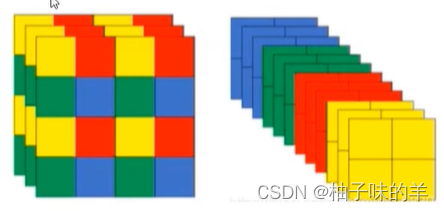
class Focus(nn.Module):# Focus wh information into c-spacedef __init__(self, c1, c2, k=1, s=1, p=None, g=1, act=True): # ch_in, ch_out, kernel, stride, padding, groupssuper(Focus, self).__init__()self.conv = Conv(c1 * 4, c2, k, s, p, g, act)def forward(self, x): # x(b,c,w,h) -> y(b,4c,w/2,h/2)return self.conv(torch.cat([x[..., ::2, ::2], x[..., 1::2, ::2], x[..., ::2, 1::2], x[..., 1::2, 1::2]], 1))
(4)BottleneckCSP
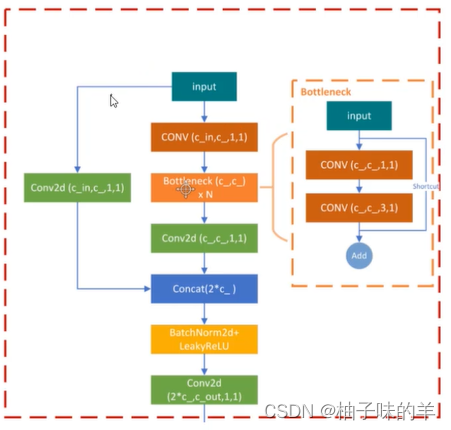
一个简单的卷积的残差连接
class BottleneckCSP(nn.Module):# CSP Bottleneck https://github.com/WongKinYiu/CrossStagePartialNetworksdef __init__(self, c1, c2, n=1, shortcut=True, g=1, e=0.5): # ch_in, ch_out, number, shortcut, groups, expansionsuper(BottleneckCSP, self).__init__()c_ = int(c2 * e) # hidden channelsself.cv1 = Conv(c1, c_, 1, 1)self.cv2 = nn.Conv2d(c1, c_, 1, 1, bias=False)self.cv3 = nn.Conv2d(c_, c_, 1, 1, bias=False)self.cv4 = Conv(2 * c_, c2, 1, 1)self.bn = nn.BatchNorm2d(2 * c_) # applied to cat(cv2, cv3)self.act = nn.LeakyReLU(0.1, inplace=True)self.m = nn.Sequential(*[Bottleneck(c_, c_, shortcut, g, e=1.0) for _ in range(n)])def forward(self, x):y1 = self.cv3(self.m(self.cv1(x)))y2 = self.cv2(x)return self.cv4(self.act(self.bn(torch.cat((y1, y2), dim=1))))
(5)SPP(spatial pyramid pooling)
- 为了更好满足不同输入大小,训练的时候要改变输入数据的大小
- SPP其实就是用最大池化来满足最终输入特征一致即可
- 这里将maxpooling的kernel设置为5,9,13,其对应的stride为1,1,1,padding为2,4,6。( output = (input-kernel+2padding)/stride +1)这样就可以根据不同的kernel和padding得到相同的output的特征,将他们cat后得到更丰富的特征
class SPP(nn.Module):# Spatial pyramid pooling layer used in YOLOv3-SPPdef __init__(self, c1, c2, k=(5, 9, 13)):super(SPP, self).__init__()c_ = c1 // 2 # hidden channelsself.cv1 = Conv(c1, c_, 1, 1)self.cv2 = Conv(c_ * (len(k) + 1), c2, 1, 1)self.m = nn.ModuleList([nn.MaxPool2d(kernel_size=x, stride=1, padding=x // 2) for x in k])def forward(self, x):x = self.cv1(x)return self.cv2(torch.cat([x] + [m(x) for m in self.m], 1))
(6)PAN(path aggregation network)
- FPN是自顶向下的模式,将高层特征传下来,高层逐层向下兼容下层(单向)
- 缺少底层到高层,PAN登场
- 引入自底向上的路径,使得底层信息更容易传到顶部
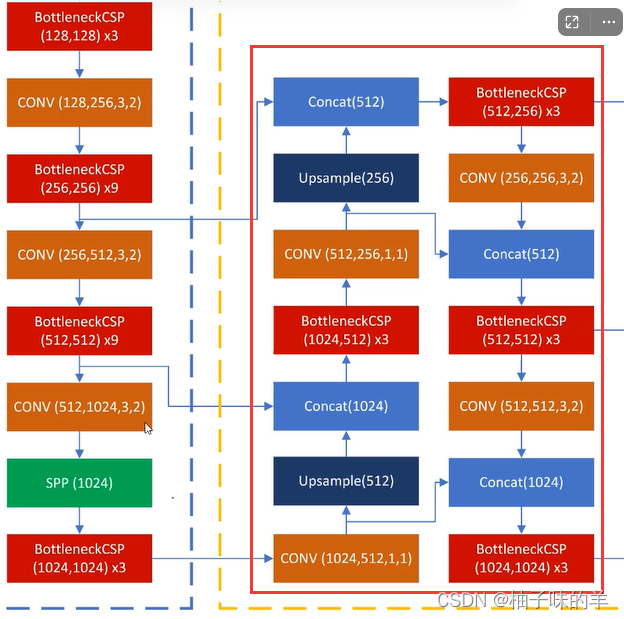
3. 训练
import argparse
import logging
import os
import random
import shutil
import time
from pathlib import Pathimport math
import numpy as np
import torch.distributed as dist
import torch.nn.functional as F
import torch.optim as optim
import torch.optim.lr_scheduler as lr_scheduler
import torch.utils.data
import yaml
from torch.cuda import amp
from torch.nn.parallel import DistributedDataParallel as DDP
from torch.utils.tensorboard import SummaryWriter
from tqdm import tqdmimport test # import test.py to get mAP after each epoch
from models.yolo import Model
from utils.datasets import create_dataloader
from utils.general import (torch_distributed_zero_first, labels_to_class_weights, plot_labels, check_anchors, labels_to_image_weights,compute_loss, plot_images, fitness, strip_optimizer, plot_results, get_latest_run, check_dataset, check_file,check_git_status, check_img_size, increment_dir, print_mutation, plot_evolution, set_logging, init_seeds)
from utils.google_utils import attempt_download
from utils.torch_utils import ModelEMA, select_device, intersect_dictslogger = logging.getLogger(__name__)def train(hyp, opt, device, tb_writer=None):logger.info(f'Hyperparameters {hyp}')#太够意思了,训练时候参数,各epoch情况,损失,测试集的结果全部保存log_dir = Path(tb_writer.log_dir) if tb_writer else Path(opt.logdir) / 'evolve' # logging directorywdir = log_dir / 'weights' # weights directoryos.makedirs(wdir, exist_ok=True)#保存路径last = wdir / 'last.pt'best = wdir / 'best.pt'results_file = str(log_dir / 'results.txt')#训练过程中各种指标epochs, batch_size, total_batch_size, weights, rank = \opt.epochs, opt.batch_size, opt.total_batch_size, opt.weights, opt.global_rank# Save run settings 保存当前参数with open(log_dir / 'hyp.yaml', 'w') as f:yaml.dump(hyp, f, sort_keys=False)with open(log_dir / 'opt.yaml', 'w') as f:yaml.dump(vars(opt), f, sort_keys=False)# Configurecuda = device.type != 'cpu'init_seeds(2 + rank)#随机种子with open(opt.data) as f:data_dict = yaml.load(f, Loader=yaml.FullLoader) # data dictwith torch_distributed_zero_first(rank):#所有进程都一起check_dataset(data_dict) # checktrain_path = data_dict['train']#数据路径与类别名字test_path = data_dict['val']nc, names = (1, ['item']) if opt.single_cls else (int(data_dict['nc']), data_dict['names']) # number classes, namesassert len(names) == nc, '%g names found for nc=%g dataset in %s' % (len(names), nc, opt.data) # check# Modelpretrained = weights.endswith('.pt')if pretrained:#有预训练模型的话,会自动下载,最好在github下载好 然后放到对应位置with torch_distributed_zero_first(rank):attempt_download(weights) # download if not found locallyckpt = torch.load(weights, map_location=device) # load checkpointif hyp.get('anchors'):ckpt['model'].yaml['anchors'] = round(hyp['anchors']) # force autoanchormodel = Model(opt.cfg or ckpt['model'].yaml, ch=3, nc=nc).to(device) # createexclude = ['anchor'] if opt.cfg or hyp.get('anchors') else [] # exclude keysstate_dict = ckpt['model'].float().state_dict() # to FP32state_dict = intersect_dicts(state_dict, model.state_dict(), exclude=exclude) # intersectmodel.load_state_dict(state_dict, strict=False) # loadlogger.info('Transferred %g/%g items from %s' % (len(state_dict), len(model.state_dict()), weights)) # reportelse:model = Model(opt.cfg, ch=3, nc=nc).to(device) # create 就是咱们之前讲的创建模型那块# Freeze 要不要冻结一些层,做迁移学习.感觉没必要。。。freeze = ['', ] # parameter names to freeze (full or partial)if any(freeze):for k, v in model.named_parameters():if any(x in k for x in freeze):print('freezing %s' % k)v.requires_grad = False# Optimizernbs = 64 # nominal batch size 累计多少次更新一次模型,咱们的话就是64/16=4次,相当于扩大batchaccumulate = max(round(nbs / total_batch_size), 1) # accumulate loss before optimizinghyp['weight_decay'] *= total_batch_size * accumulate / nbs # scale weight_decaypg0, pg1, pg2 = [], [], [] # optimizer parameter groups 设置了个优化组:权重,偏置,其他参数for k, v in model.named_parameters():v.requires_grad = Trueif '.bias' in k:pg2.append(v) # biaseselif '.weight' in k and '.bn' not in k:pg1.append(v) # apply weight decayelse:pg0.append(v) # all elseif opt.adam: #优化器与学习率衰减optimizer = optim.Adam(pg0, lr=hyp['lr0'], betas=(hyp['momentum'], 0.999)) # adjust beta1 to momentumelse:optimizer = optim.SGD(pg0, lr=hyp['lr0'], momentum=hyp['momentum'], nesterov=True)optimizer.add_param_group({'params': pg1, 'weight_decay': hyp['weight_decay']}) # add pg1 with weight_decayoptimizer.add_param_group({'params': pg2}) # add pg2 (biases)logger.info('Optimizer groups: %g .bias, %g conv.weight, %g other' % (len(pg2), len(pg1), len(pg0)))del pg0, pg1, pg2# Scheduler https://arxiv.org/pdf/1812.01187.pdf# https://pytorch.org/docs/stable/_modules/torch/optim/lr_scheduler.html#OneCycleLRlf = lambda x: ((1 + math.cos(x * math.pi / epochs)) / 2) * (1 - hyp['lrf']) + hyp['lrf'] # cosinescheduler = lr_scheduler.LambdaLR(optimizer, lr_lambda=lf)# plot_lr_scheduler(optimizer, scheduler, epochs)# Resume 这个best_fitness是sum([0.0, 0.0, 0.1, 0.9]*[精确度, 召回率, mAP@0.5, mAP@0.5:0.95])# 相当于一个综合指标来判断每一次的得分start_epoch, best_fitness = 0, 0.0if pretrained:# Optimizer 优化器if ckpt['optimizer'] is not None:optimizer.load_state_dict(ckpt['optimizer'])best_fitness = ckpt['best_fitness']# Results结果if ckpt.get('training_results') is not None:with open(results_file, 'w') as file:file.write(ckpt['training_results']) # write results.txt# Epochs 训练了多少次了已经start_epoch = ckpt['epoch'] + 1if opt.resume:#又保存了一份?新训练的会覆盖之前旧的?assert start_epoch > 0, '%s training to %g epochs is finished, nothing to resume.' % (weights, epochs)shutil.copytree(wdir, wdir.parent / f'weights_backup_epoch{start_epoch - 1}') # save previous weightsif epochs < start_epoch:#就是你设置的epoch为100 但是现在模型已经训练了150 那就再训练100logger.info('%s has been trained for %g epochs. Fine-tuning for %g additional epochs.' %(weights, ckpt['epoch'], epochs))epochs += ckpt['epoch'] # finetune additional epochsdel ckpt, state_dict# Image sizes stride是总的下采样比例 目的是看下数据的大小能不能整除这个比例gs = int(max(model.stride)) # grid size (max stride)imgsz, imgsz_test = [check_img_size(x, gs) for x in opt.img_size] # verify imgsz are gs-multiples# DP mode 如果你的机器里面有过个GPU,需要改一些参数。官网教程:https://github.com/ultralytics/yolov5/issues/475if cuda and rank == -1 and torch.cuda.device_count() > 1:model = torch.nn.DataParallel(model)# SyncBatchNorm 多卡同步做BNif opt.sync_bn and cuda and rank != -1:model = torch.nn.SyncBatchNorm.convert_sync_batchnorm(model).to(device)logger.info('Using SyncBatchNorm()')# Exponential moving average 滑动平均能让参数更新的更平滑一点不至于波动太大# 参考博客:https://www.jianshu.com/p/f99f982ad370ema = ModelEMA(model) if rank in [-1, 0] else None# DDP mode 多机多卡,有时候DP可能会出现负载不均衡,这个能直接解决该问题。DP用的时候 经常ID为0的GPU干满,其他的没咋用if cuda and rank != -1:model = DDP(model, device_ids=[opt.local_rank], output_device=opt.local_rank)# Trainloader 创建dataloader就是我们一开始讲的部分dataloader, dataset = create_dataloader(train_path, imgsz, batch_size, gs, opt,hyp=hyp, augment=True, cache=opt.cache_images, rect=opt.rect,rank=rank, world_size=opt.world_size, workers=opt.workers)mlc = np.concatenate(dataset.labels, 0)[:, 0].max() # max label class 判断类别数是否正常nb = len(dataloader) # number of batchesassert mlc < nc, 'Label class %g exceeds nc=%g in %s. Possible class labels are 0-%g' % (mlc, nc, opt.data, nc - 1)# Process 0if rank in [-1, 0]:ema.updates = start_epoch * nb // accumulate # set EMA updates testloader = create_dataloader(test_path, imgsz_test, total_batch_size, gs, opt,hyp=hyp, augment=False, cache=opt.cache_images and not opt.notest, rect=True,rank=-1, world_size=opt.world_size, workers=opt.workers)[0] # testloaderif not opt.resume:labels = np.concatenate(dataset.labels, 0)c = torch.tensor(labels[:, 0]) # classes# cf = torch.bincount(c.long(), minlength=nc) + 1. # frequency# model._initialize_biases(cf.to(device))plot_labels(labels, save_dir=log_dir)if tb_writer:# tb_writer.add_hparams(hyp, {}) # causes duplicate https://github.com/ultralytics/yolov5/pull/384tb_writer.add_histogram('classes', c, 0)# Anchorsif not opt.noautoanchor:check_anchors(dataset, model=model, thr=hyp['anchor_t'], imgsz=imgsz)# Model parameters 类别个数,hyp['cls'] *= nc / 80. # scale coco-tuned hyp['cls'] to current datasetmodel.nc = nc # attach number of classes to modelmodel.hyp = hyp # attach hyperparameters to modelmodel.gr = 1.0 # iou loss ratio (obj_loss = 1.0 or iou)#根据标签设置各类别数据初始权重model.class_weights = labels_to_class_weights(dataset.labels, nc).to(device) # attach class weightsmodel.names = names# Start trainingt0 = time.time()#热身持续多少个epochnw = max(round(hyp['warmup_epochs'] * nb), 1e3) # number of warmup iterations, max(3 epochs, 1k iterations)# nw = min(nw, (epochs - start_epoch) / 2 * nb) # limit warmup to < 1/2 of training# 日志要保存的结果,先初始化maps = np.zeros(nc) # mAP per classresults = (0, 0, 0, 0, 0, 0, 0) # P, R, mAP@.5, mAP@.5-.95, val_loss(box, obj, cls)scheduler.last_epoch = start_epoch - 1 # do not move#混合精度训练,参考官网说明:https://pytorch.org/docs/stable/amp.html 1.6新功能 fp32与fp16混合 提速比较多scaler = amp.GradScaler(enabled=cuda)#打印信息logger.info('Image sizes %g train, %g test\n''Using %g dataloader workers\nLogging results to %s\n''Starting training for %g epochs...' % (imgsz, imgsz_test, dataloader.num_workers, log_dir, epochs))for epoch in range(start_epoch, epochs): # epoch ------------------------------------------------------------------model.train()# Update image weights (optional)if opt.image_weights:# Generate indicesif rank in [-1, 0]:cw = model.class_weights.cpu().numpy() * (1 - maps) ** 2 # class weightsiw = labels_to_image_weights(dataset.labels, nc=nc, class_weights=cw) # image weightsdataset.indices = random.choices(range(dataset.n), weights=iw, k=dataset.n) # rand weighted idx# Broadcast if DDPif rank != -1:indices = (torch.tensor(dataset.indices) if rank == 0 else torch.zeros(dataset.n)).int()dist.broadcast(indices, 0)if rank != 0:dataset.indices = indices.cpu().numpy()# Update mosaic border# b = int(random.uniform(0.25 * imgsz, 0.75 * imgsz + gs) // gs * gs)# dataset.mosaic_border = [b - imgsz, -b] # height, width bordersmloss = torch.zeros(4, device=device) # mean lossesif rank != -1: #DDP模式每次取数据的随机种子都不同dataloader.sampler.set_epoch(epoch)#创建进度条pbar = enumerate(dataloader)logger.info(('\n' + '%10s' * 8) % ('Epoch', 'gpu_mem', 'box', 'obj', 'cls', 'total', 'targets', 'img_size'))if rank in [-1, 0]:pbar = tqdm(pbar, total=nb) # progress baroptimizer.zero_grad()for i, (imgs, targets, paths, _) in pbar: # batch -------------------------------------------------------------ni = i + nb * epoch # number integrated batches (since train start)# 归一化imgs = imgs.to(device, non_blocking=True).float() / 255.0 # uint8 to float32, 0-255 to 0.0-1.0# Warmup 热身if ni <= nw:xi = [0, nw] # x interp# model.gr = np.interp(ni, xi, [0.0, 1.0]) # iou loss ratio (obj_loss = 1.0 or iou)accumulate = max(1, np.interp(ni, xi, [1, nbs / total_batch_size]).round())for j, x in enumerate(optimizer.param_groups):# bias lr falls from 0.1 to lr0, all other lrs rise from 0.0 to lr0 lf就是余弦衰退函数x['lr'] = np.interp(ni, xi, [hyp['warmup_bias_lr'] if j == 2 else 0.0, x['initial_lr'] * lf(epoch)])if 'momentum' in x:x['momentum'] = np.interp(ni, xi, [hyp['warmup_momentum'], hyp['momentum']])# Multi-scale 各种输入的大小,也是随机的范围[imgsz * 0.5, imgsz * 1.5 + gs] 其中gs=32if opt.multi_scale:sz = random.randrange(imgsz * 0.5, imgsz * 1.5 + gs) // gs * gs # sizesf = sz / max(imgs.shape[2:]) # scale factorif sf != 1: #得到新的输入大小ns = [math.ceil(x * sf / gs) * gs for x in imgs.shape[2:]] # new shape (stretched to gs-multiple)imgs = F.interpolate(imgs, size=ns, mode='bilinear', align_corners=False)# Forwardwith amp.autocast(enabled=cuda):# 用到了1.6新特性 混合精度pred = model(imgs) # forward#总损失,分类损失,回归损失,置信度损失loss, loss_items = compute_loss(pred, targets.to(device), model) # loss scaled by batch_sizeif rank != -1:loss *= opt.world_size # gradient averaged between devices in DDP mode# Backwardscaler.scale(loss).backward()# Optimize 相当于Backward多次才更新一次参数if ni % accumulate == 0:scaler.step(optimizer) # optimizer.stepscaler.update()optimizer.zero_grad()if ema:ema.update(model)# Print 展示信息if rank in [-1, 0]:mloss = (mloss * i + loss_items) / (i + 1) # update mean lossesmem = '%.3gG' % (torch.cuda.memory_reserved() / 1E9 if torch.cuda.is_available() else 0) # (GB)s = ('%10s' * 2 + '%10.4g' * 6) % ('%g/%g' % (epoch, epochs - 1), mem, *mloss, targets.shape[0], imgs.shape[-1])pbar.set_description(s)# Plotif ni < 3:f = str(log_dir / ('train_batch%g.jpg' % ni)) # filenameresult = plot_images(images=imgs, targets=targets, paths=paths, fname=f)if tb_writer and result is not None:tb_writer.add_image(f, result, dataformats='HWC', global_step=epoch)# tb_writer.add_graph(model, imgs) # add model to tensorboard# end batch ------------------------------------------------------------------------------------------------# Scheduler 学习率衰减lr = [x['lr'] for x in optimizer.param_groups] # for tensorboardscheduler.step()# DDP process 0 or single-GPUif rank in [-1, 0]:# mAP 更新EMAif ema:ema.update_attr(model, include=['yaml', 'nc', 'hyp', 'gr', 'names', 'stride'])final_epoch = epoch + 1 == epochsif not opt.notest or final_epoch: # Calculate mAPresults, maps, times = test.test(opt.data,batch_size=total_batch_size,imgsz=imgsz_test,model=ema.ema,single_cls=opt.single_cls,dataloader=testloader,save_dir=log_dir,plots=epoch == 0 or final_epoch) # plot first and last# Writewith open(results_file, 'a') as f:f.write(s + '%10.4g' * 7 % results + '\n') # P, R, mAP@.5, mAP@.5-.95, val_loss(box, obj, cls)if len(opt.name) and opt.bucket:#这个整不了,涉及上传os.system('gsutil cp %s gs://%s/results/results%s.txt' % (results_file, opt.bucket, opt.name))# Tensorboardif tb_writer:tags = ['train/box_loss', 'train/obj_loss', 'train/cls_loss', # train loss'metrics/precision', 'metrics/recall', 'metrics/mAP_0.5', 'metrics/mAP_0.5:0.95','val/box_loss', 'val/obj_loss', 'val/cls_loss', # val loss'x/lr0', 'x/lr1', 'x/lr2'] # paramsfor x, tag in zip(list(mloss[:-1]) + list(results) + lr, tags):tb_writer.add_scalar(tag, x, epoch)# Update best mAPfi = fitness(np.array(results).reshape(1, -1)) # weighted combination of [P, R, mAP@.5, mAP@.5-.95]if fi > best_fitness:best_fitness = fi# Save modelsave = (not opt.nosave) or (final_epoch and not opt.evolve)if save:with open(results_file, 'r') as f: # create checkpointckpt = {'epoch': epoch,'best_fitness': best_fitness,'training_results': f.read(),'model': ema.ema,'optimizer': None if final_epoch else optimizer.state_dict()}# Save last, best and deletetorch.save(ckpt, last)if best_fitness == fi:torch.save(ckpt, best)del ckpt# end epoch ----------------------------------------------------------------------------------------------------# end trainingif rank in [-1, 0]:# Strip optimizersn = opt.name if opt.name.isnumeric() else ''fresults, flast, fbest = log_dir / f'results{n}.txt', wdir / f'last{n}.pt', wdir / f'best{n}.pt'for f1, f2 in zip([wdir / 'last.pt', wdir / 'best.pt', results_file], [flast, fbest, fresults]):if os.path.exists(f1):os.rename(f1, f2) # renameif str(f2).endswith('.pt'): # is *.ptstrip_optimizer(f2) # strip optimizeros.system('gsutil cp %s gs://%s/weights' % (f2, opt.bucket)) if opt.bucket else None # upload# Finishif not opt.evolve:plot_results(save_dir=log_dir) # save as results.pnglogger.info('%g epochs completed in %.3f hours.\n' % (epoch - start_epoch + 1, (time.time() - t0) / 3600))dist.destroy_process_group() if rank not in [-1, 0] else Nonetorch.cuda.empty_cache()return resultsif __name__ == '__main__':parser = argparse.ArgumentParser()parser.add_argument('--weights', type=str, default=r'..\weights\yolov5s.pt', help='initial weights path')parser.add_argument('--cfg', type=str, default=r'..\models\yolov5s.yaml', help='model.yaml path')#网络配置parser.add_argument('--data', type=str, default=r'..\MaskDataSet\data.yaml', help='data.yaml path')#数据parser.add_argument('--hyp', type=str, default='../data/hyp.scratch.yaml', help='hyperparameters path')parser.add_argument('--epochs', type=int, default=300)parser.add_argument('--batch-size', type=int, default=2, help='total batch size for all GPUs')parser.add_argument('--img-size', nargs='+', type=int, default=[640, 640], help='[train, test] image sizes')parser.add_argument('--rect', action='store_true', help='rectangular training')#矩形训练parser.add_argument('--resume', nargs='?', const=True, default=False, help='resume most recent training')#接着之前的训练parser.add_argument('--nosave', action='store_true', help='only save final checkpoint')#不保存parser.add_argument('--notest', action='store_true', help='only test final epoch')#不测试parser.add_argument('--noautoanchor', action='store_true', help='disable autoanchor check')#是否调整候选框parser.add_argument('--evolve', action='store_true', help='evolve hyperparameters')#超参数更新parser.add_argument('--bucket', type=str, default='', help='gsutil bucket')parser.add_argument('--cache-images', action='store_true', help='cache images for faster training')#缓存图片parser.add_argument('--image-weights', action='store_true', help='use weighted image selection for training')parser.add_argument('--name', default='', help='renames experiment folder exp{N} to exp{N}_{name} if supplied')parser.add_argument('--device', default='', help='cuda device, i.e. 0 or 0,1,2,3 or cpu')parser.add_argument('--multi-scale', action='store_true', help='vary img-size +/- 50%%')#是否多尺度训练parser.add_argument('--single-cls', action='store_true', help='train as single-class dataset')#是否一个类别parser.add_argument('--adam', action='store_true', help='use torch.optim.Adam() optimizer')#优化器选择parser.add_argument('--sync-bn', action='store_true', help='use SyncBatchNorm, only available in DDP mode')#跨GPU的BNparser.add_argument('--local_rank', type=int, default=-1, help='DDP parameter, do not modify')#GPU IDparser.add_argument('--logdir', type=str, default='runs/', help='logging directory')parser.add_argument('--workers', type=int, default=0, help='maximum number of dataloader workers')#windows的同学别改opt = parser.parse_args()# Set DDP variables WORLD_SIZE:进程数 RANK:进程编号opt.total_batch_size = opt.batch_sizeopt.world_size = int(os.environ['WORLD_SIZE']) if 'WORLD_SIZE' in os.environ else 1opt.global_rank = int(os.environ['RANK']) if 'RANK' in os.environ else -1set_logging(opt.global_rank)if opt.global_rank in [-1, 0]:check_git_status()# Resumeif opt.resume: # resume an interrupted run 是否继续训练#传入模型的路径或者最后一次跑的模型(在runs中有last.pt)ckpt = opt.resume if isinstance(opt.resume, str) else get_latest_run() # specified or most recent pathlog_dir = Path(ckpt).parent.parent # runs/exp0assert os.path.isfile(ckpt), 'ERROR: --resume checkpoint does not exist'with open(log_dir / 'opt.yaml') as f:opt = argparse.Namespace(**yaml.load(f, Loader=yaml.FullLoader)) # replaceopt.cfg, opt.weights, opt.resume = '', ckpt, Truelogger.info('Resuming training from %s' % ckpt)else:#加载之前配置好的参数# opt.hyp = opt.hyp or ('hyp.finetune.yaml' if opt.weights else 'hyp.scratch.yaml')opt.data, opt.cfg, opt.hyp = check_file(opt.data), check_file(opt.cfg), check_file(opt.hyp) # check filesassert len(opt.cfg) or len(opt.weights), 'either --cfg or --weights must be specified'opt.img_size.extend([opt.img_size[-1]] * (2 - len(opt.img_size))) # extend to 2 sizes (train, test)log_dir = increment_dir(Path(opt.logdir) / 'exp', opt.name) # runs/exp1device = select_device(opt.device, batch_size=opt.batch_size)# DDP mode 分布式训练,没有多卡的同学略过if opt.local_rank != -1:assert torch.cuda.device_count() > opt.local_ranktorch.cuda.set_device(opt.local_rank)#选择GPUdevice = torch.device('cuda', opt.local_rank)dist.init_process_group(backend='nccl', init_method='env://') # distributed backendassert opt.batch_size % opt.world_size == 0, '--batch-size must be multiple of CUDA device count'opt.batch_size = opt.total_batch_size // opt.world_sizelogger.info(opt)with open(opt.hyp) as f:hyp = yaml.load(f, Loader=yaml.FullLoader) # load hyps# Trainif not opt.evolve:tb_writer = Noneif opt.global_rank in [-1, 0]:logger.info(f'Start Tensorboard with "tensorboard --logdir {opt.logdir}", view at http://localhost:6006/')tb_writer = SummaryWriter(log_dir=log_dir) # runs/exp0train(hyp, opt, device, tb_writer)# 参数搜索与突变# Evolve hyperparameters (optional) 参考github issue:https://github.com/ultralytics/yolov3/issues/392else:# Hyperparameter evolution metadata (mutation scale 0-1, lower_limit, upper_limit)meta = {'lr0': (1, 1e-5, 1e-1), # initial learning rate (SGD=1E-2, Adam=1E-3)'lrf': (1, 0.01, 1.0), # final OneCycleLR learning rate (lr0 * lrf)'momentum': (0.3, 0.6, 0.98), # SGD momentum/Adam beta1'weight_decay': (1, 0.0, 0.001), # optimizer weight decay'warmup_epochs': (1, 0.0, 5.0), # warmup epochs (fractions ok)'warmup_momentum': (1, 0.0, 0.95), # warmup initial momentum'warmup_bias_lr': (1, 0.0, 0.2), # warmup initial bias lr'box': (1, 0.02, 0.2), # box loss gain'cls': (1, 0.2, 4.0), # cls loss gain'cls_pw': (1, 0.5, 2.0), # cls BCELoss positive_weight'obj': (1, 0.2, 4.0), # obj loss gain (scale with pixels)'obj_pw': (1, 0.5, 2.0), # obj BCELoss positive_weight'iou_t': (0, 0.1, 0.7), # IoU training threshold'anchor_t': (1, 2.0, 8.0), # anchor-multiple threshold'anchors': (2, 2.0, 10.0), # anchors per output grid (0 to ignore)'fl_gamma': (0, 0.0, 2.0), # focal loss gamma (efficientDet default gamma=1.5)'hsv_h': (1, 0.0, 0.1), # image HSV-Hue augmentation (fraction)'hsv_s': (1, 0.0, 0.9), # image HSV-Saturation augmentation (fraction)'hsv_v': (1, 0.0, 0.9), # image HSV-Value augmentation (fraction)'degrees': (1, 0.0, 45.0), # image rotation (+/- deg)'translate': (1, 0.0, 0.9), # image translation (+/- fraction)'scale': (1, 0.0, 0.9), # image scale (+/- gain)'shear': (1, 0.0, 10.0), # image shear (+/- deg)'perspective': (0, 0.0, 0.001), # image perspective (+/- fraction), range 0-0.001'flipud': (1, 0.0, 1.0), # image flip up-down (probability)'fliplr': (0, 0.0, 1.0), # image flip left-right (probability)'mosaic': (1, 0.0, 1.0), # image mixup (probability)'mixup': (1, 0.0, 1.0)} # image mixup (probability)assert opt.local_rank == -1, 'DDP mode not implemented for --evolve'opt.notest, opt.nosave = True, True # only test/save final epoch# ei = [isinstance(x, (int, float)) for x in hyp.values()] # evolvable indicesyaml_file = Path(opt.logdir) / 'evolve' / 'hyp_evolved.yaml' # save best result hereif opt.bucket:os.system('gsutil cp gs://%s/evolve.txt .' % opt.bucket) # download evolve.txt if existsfor _ in range(300): # generations to evolveif os.path.exists('evolve.txt'): # if evolve.txt exists: select best hyps and mutate# Select parent(s)parent = 'single' # parent selection method: 'single' or 'weighted'x = np.loadtxt('evolve.txt', ndmin=2)n = min(5, len(x)) # number of previous results to considerx = x[np.argsort(-fitness(x))][:n] # top n mutationsw = fitness(x) - fitness(x).min() # weightsif parent == 'single' or len(x) == 1:# x = x[random.randint(0, n - 1)] # random selectionx = x[random.choices(range(n), weights=w)[0]] # weighted selectionelif parent == 'weighted':x = (x * w.reshape(n, 1)).sum(0) / w.sum() # weighted combination# Mutatemp, s = 0.8, 0.2 # mutation probability, sigmanpr = np.randomnpr.seed(int(time.time()))g = np.array([x[0] for x in meta.values()]) # gains 0-1ng = len(meta)v = np.ones(ng)while all(v == 1): # mutate until a change occurs (prevent duplicates)v = (g * (npr.random(ng) < mp) * npr.randn(ng) * npr.random() * s + 1).clip(0.3, 3.0)for i, k in enumerate(hyp.keys()): # plt.hist(v.ravel(), 300)hyp[k] = float(x[i + 7] * v[i]) # mutate# Constrain to limitsfor k, v in meta.items():hyp[k] = max(hyp[k], v[1]) # lower limithyp[k] = min(hyp[k], v[2]) # upper limithyp[k] = round(hyp[k], 5) # significant digits# Train mutationresults = train(hyp.copy(), opt, device)# Write mutation resultsprint_mutation(hyp.copy(), results, yaml_file, opt.bucket)# Plot resultsplot_evolution(yaml_file)print(f'Hyperparameter evolution complete. Best results saved as: {yaml_file}\n'f'Command to train a new model with these hyperparameters: $ python train.py --hyp {yaml_file}')就这些了,欢迎大家留言讨论,累了,看书去了!

